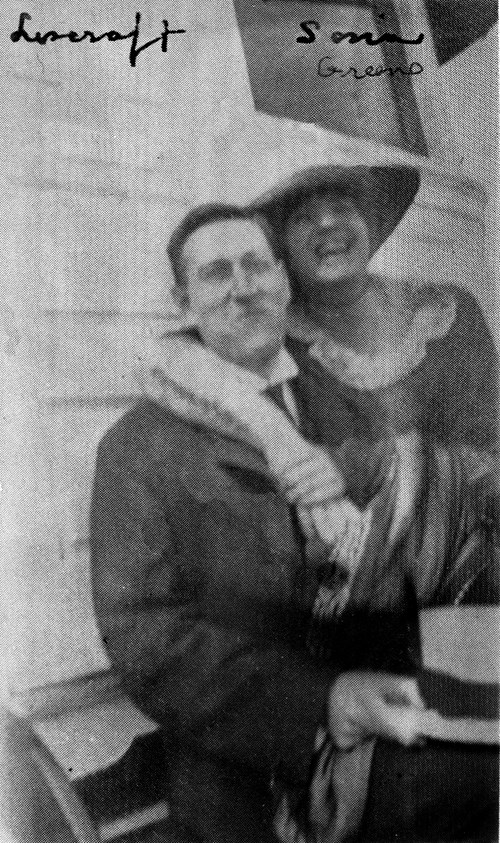
MIDNIGHT RAMBLES: H. P. Lovecraft in Gotham
DAVID J. GOODWIN
Empire State Editions
$29.95 hardcover, available now
Rating: 4.25* of five
The Publisher Says: A micro-biography of horror fiction’s most influential author and his love–hate relationship with New York City.
By the end of his life and near financial ruin, pulp horror writer Howard Phillips Lovecraft resigned himself to the likelihood that his writing would be forgotten. Today, Lovecraft stands alongside J. R. R. Tolkien as the most influential genre writer of the twentieth century. His reputation as an unreformed racist and bigot, however, leaves readers to grapple with his legacy. Midnight Rambles explores Lovecraft’s time in New York City, a crucial yet often overlooked chapter in his life that shaped his literary career and the inextricable racism in his work.
Initially, New York stood as a place of liberation for Lovecraft. During the brief period between 1924 and 1926 when he lived there, Lovecraft joined a creative community and experimented with bohemian living in the publishing and cultural capital of the United States. He also married fellow writer Sonia H. Greene, a Ukrainian-Jewish émigré in the fashion industry. However, cascading personal setbacks and his own professional ineptitude soured him on New York. As Lovecraft became more frustrated, his xenophobia and racism became more pronounced. New York’s large immigrant population and minority communities disgusted him, and this mindset soon became evident in his writing. Many of his stories from this era are infused with racial and ethnic stereotypes and nativist themes, most notably his overtly racist short story, “The Horror at Red Hook,” set in Red Hook, Brooklyn. His personal letters reveal an even darker bigotry.
Author David J. Goodwin presents a chronological micro-biography of Lovecraft’s New York years, emphasizing Lovecraft’s exploration of the city environment, the greater metropolitan region, and other locales and how they molded him as a writer and as an individual. Drawing from primary sources (letters, memoirs, and published personal reflections) and secondary sources (biographies and scholarship), Midnight Rambles develops a portrait of a talented and troubled author and offers insights into his unsettling beliefs on race, ethnicity, and immigration.
I RECEIVED A DRC FROM THE PUBLISHER VIA EDELWEISS+. THANK YOU.
My Review: S.T. Joshi's two-volume I Am Providence is the go-to biography of this awful human being whose fiction output changed what we know as horror fiction. It's a much more...worshipful isn't too strong a term, but let's use the slightly less judgmental term "positively inclined"...take on his entire life.
We don't get that tone here. The author focuses on Lovecraft's New York years. It's pretty much impossible to make the time he spent in the place that inspired the utterly despicably racist story "The Horror at Red Hook" anything but dark and negative.

Rheinhart Kleiner introduced his mutual friends H. P. Lovecraft and Sonia H. Greene during a boat tour of Boston Harbor in July 1921. The three were attending an amateur journalism convention in the city.
That is both true, and misleading. This narrowly focused life of Lovecraft isn't a hatchet-job. It is, instead, a careful look at the whos, whats, and whys of Lovecraft coming into himself as a person and a writer.
That he wasn't a very nice person, well, you know what? Facing up to the real person who typed the words that formed the stories you love or loved is not something we can avoid in the twenty-first century. The fascinating part to me was that there needn't have been this curdling of his heart. There was a window for someone to reach into his heart and pull out a kinder human being. Sonia Greene certainly tried this feat.

Greene grew more intrigued by Lovecraft throughout the Boston convention. This marked the beginning of their relationship.
A brief moment of happiness. It beggars belief to me that this smiling boy is H.P. Lovecraft, whose sour unsmiling visage is reproduced on so many book covers.

While Lovecraft strolled through Brooklyn Heights one evening, a neglected garden captured his attention. This might have been the grounds of the James S. Rockwell House.
His environs always influenced his creative process, naturally. Seeing such sights in Brooklyn, an urban space, would've charged up his future use of the surprising, hidden facet of his stories' settings. As a matter of fact he seems to have found the experience more formative than most others he would have while living in New York.
 Lovecraft regularly wandered New York City’s nighttime streets to discover buildings reflecting the architectural styles of colonial and early America. He described Greenwich Village’s Gay Street as a “quaint, curving little alley.”
Lovecraft regularly wandered New York City’s nighttime streets to discover buildings reflecting the architectural styles of colonial and early America. He described Greenwich Village’s Gay Street as a “quaint, curving little alley.”That it is! Still looks like this, too. It doesn't seem to have sweetened his world-view....

When exploring New York City, Lovecraft sought pockets of nature largely unblemished by urban development. Today’s Inwood Hill Park in Manhattan stood as such a space.
Holy carp! That's INWOOD?! My goodness, a hundred years makes a big difference.
I think my point's made. This is a terrific book about the nasty guy who refined and codified the tropes and topics that now make up "cosmic horror." He is seen here on the cusp of all the floods of words that would make this enduring contribution to our culture. I was drawn into this story by the details I did not know, despite the trajectory and ending being already familiar.
I'm convinced your young Lovecraft/horror reader will be as taken with this read as I was. I can't get all the way over the hump to five stars because I dislike Lovecraft that much. That's probably a testimonial to how well Author Goodwin did his job.
No comments:
Post a Comment
Note: Only a member of this blog may post a comment.